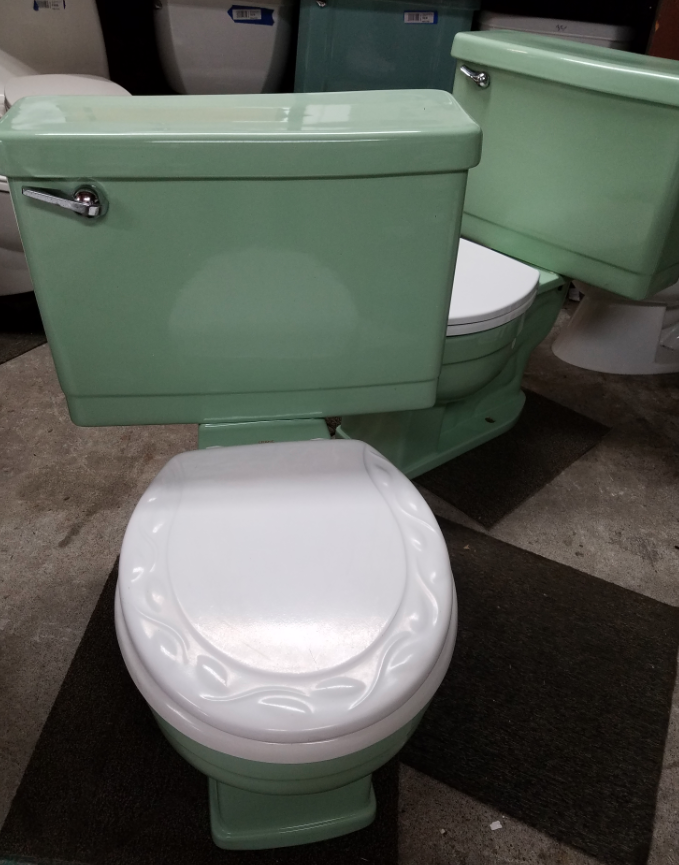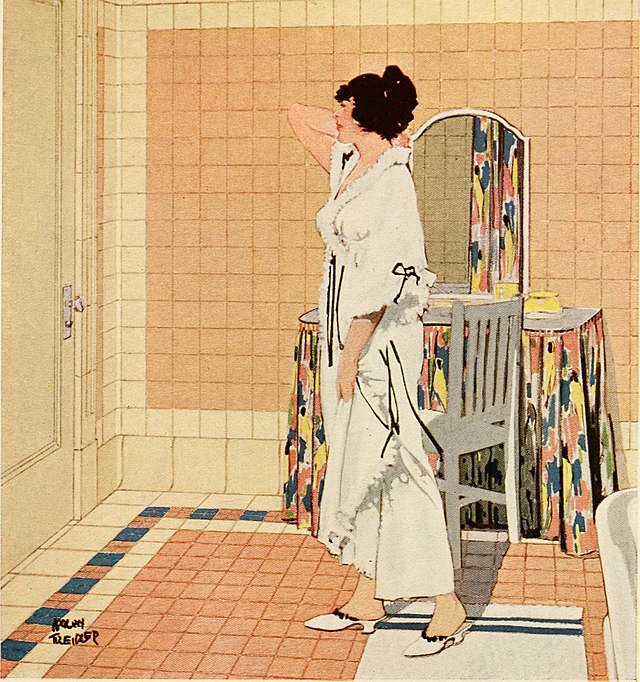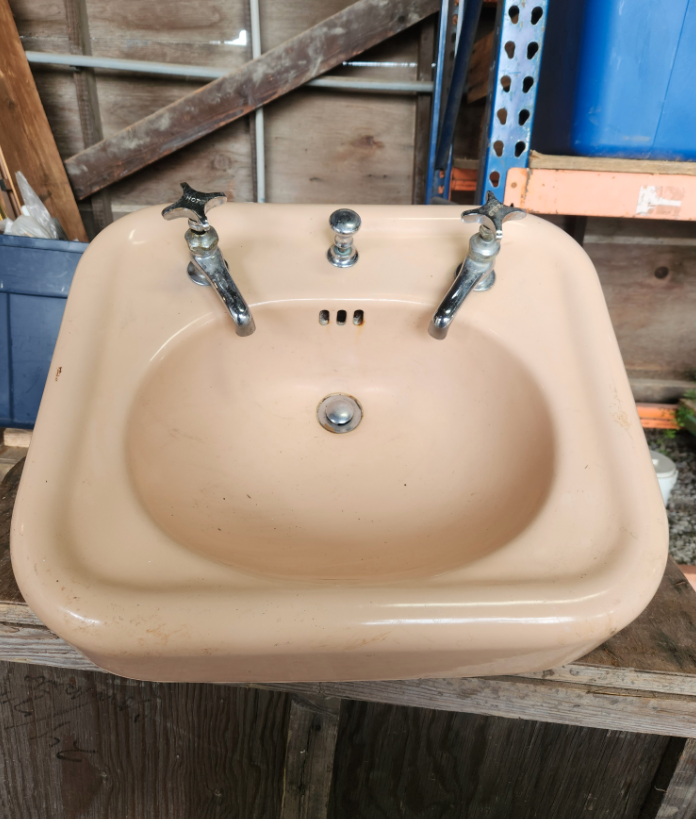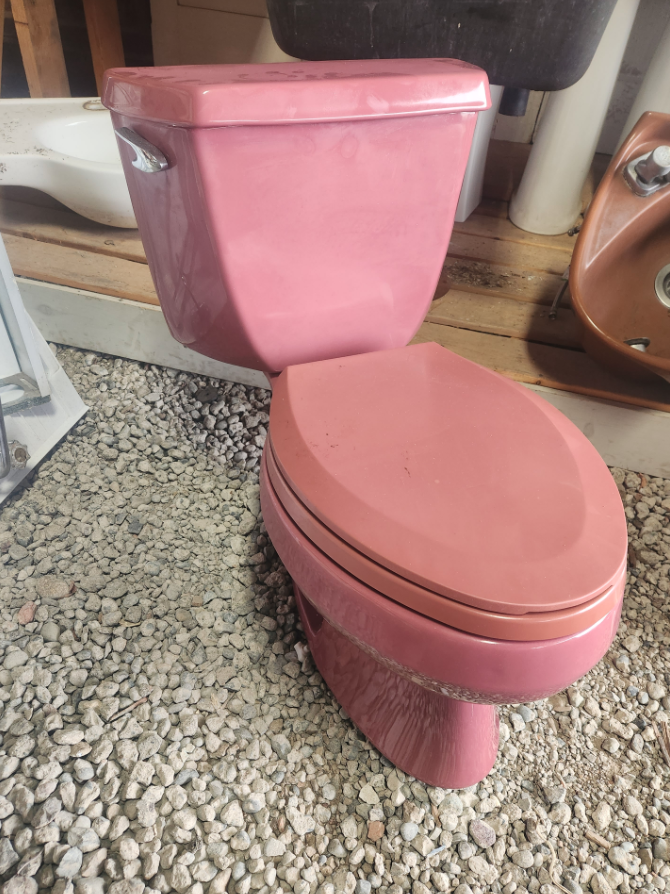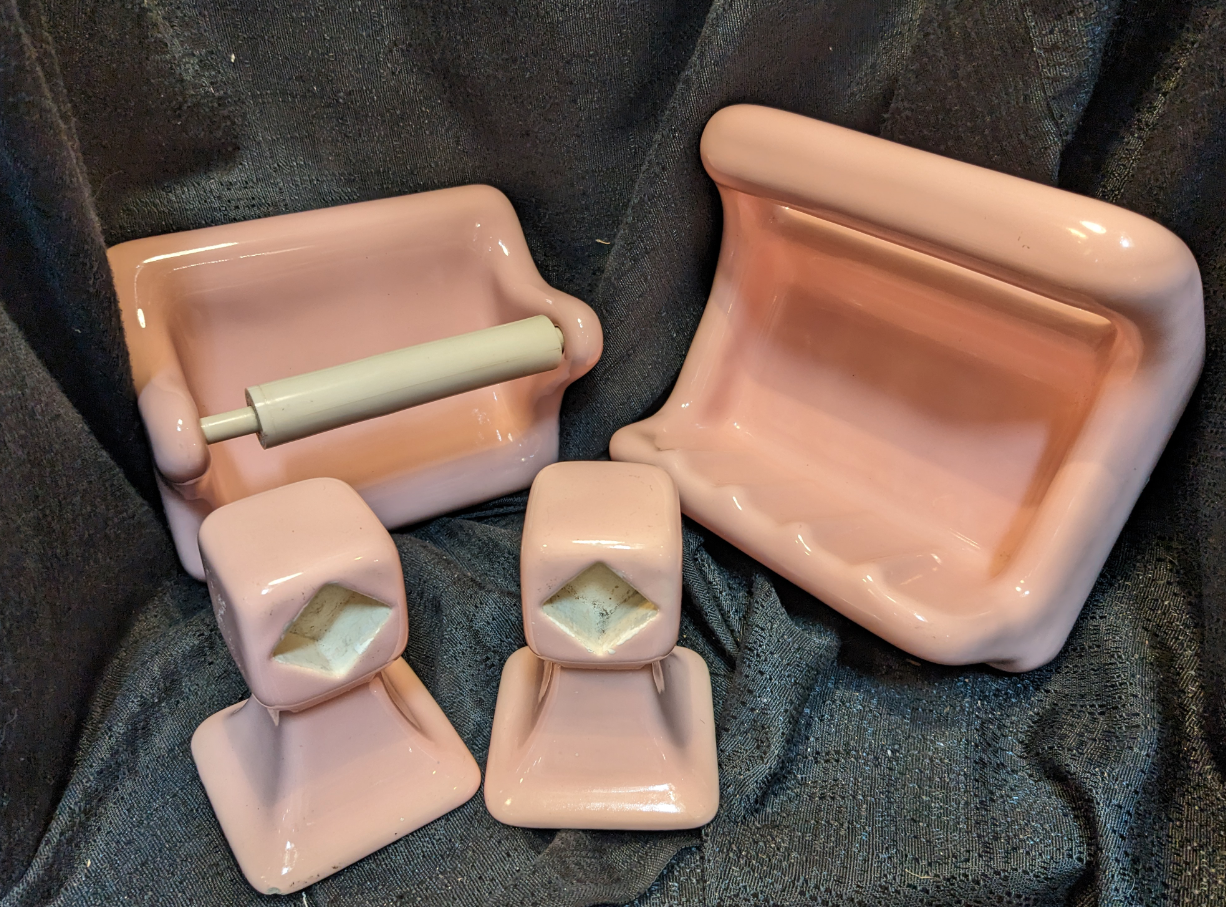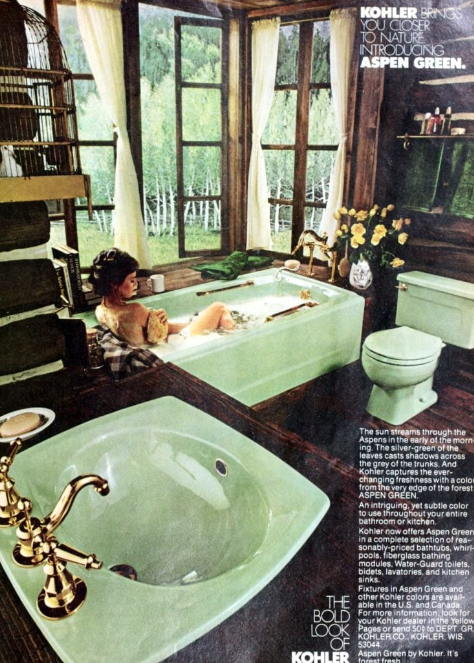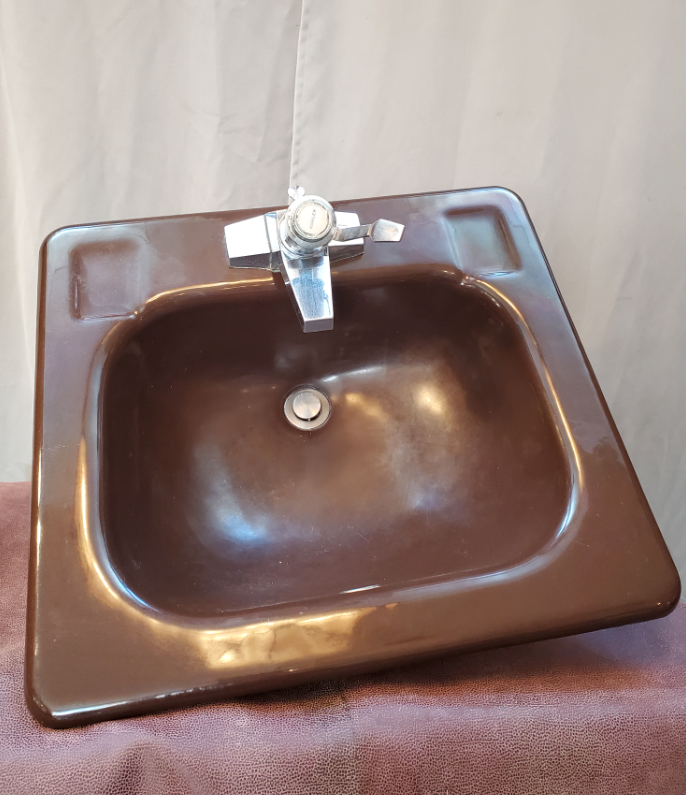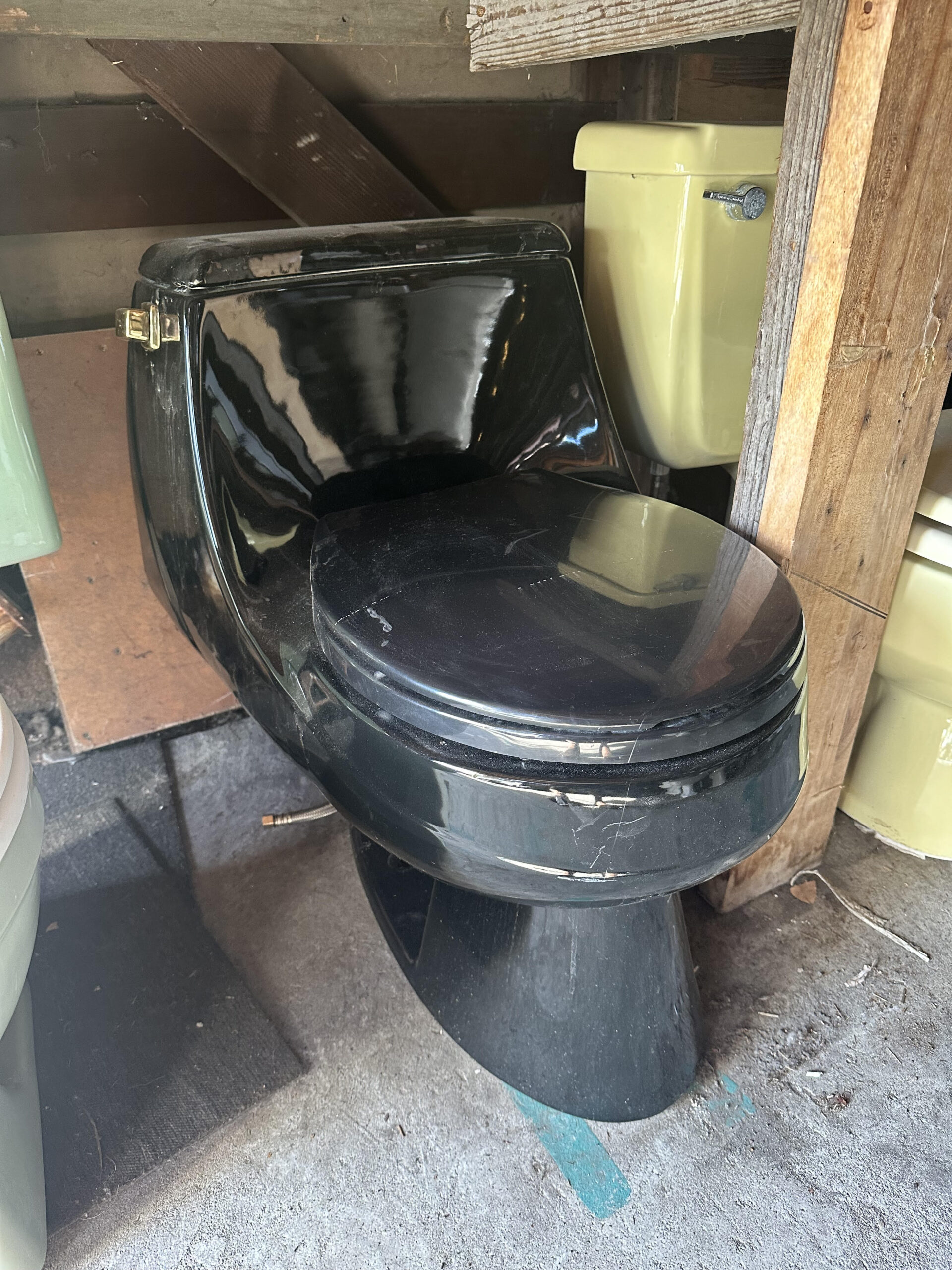In a nod to history, Kohler reintroduced vintage bathroom colors into their new limited edition collection in 2023. To celebrate Kohler’s 150th anniversary, two vintage colors were brought on by over 100,000 votes: the “Peachblow”, a light pinky peach color introduced in 1934, and “Spring Green”, originally made in 1927!
Take one look at our Toilet Rooms (also filled with sinks!), and you’ll see we, too, celebrate the bright and bold colors of the past. From the early 1920s to the 1980s, you’ll spot many shades that reflect different eras of design.
Once in a while, you might even see a highly sought after vintage color and design that no longer exists today.
Here’s a look at some colors of bathroom design throughout the eras:
1920s
The 1920s were a time of elegance and subtlety in vintage bathroom colors, favoring delicate pink, pale blue, mint green, and soft yellow, alongside the timeless black and white motifs. This era laid the foundation for the sea foam green craze, mirroring Kohler’s “Spring Green” color.
1930s
As we moved into the 1930s, the color palette expanded to include pink and peach shades (much like Kohler’s “Peachbow”). The period also saw the emergence of burgundy and maroon, adding sophistication to bathroom designs.
1940s
The return of black and white in the 1940s with square tiles patterns creating a stark look. The war years saw a restraint in luxury, with post-war colors turning more somber, such as clay pink or burgundy paired with gray.
1950s
The 1950s brought pastels in abundance! With bathrooms adorned in shades of pink, turquoise, mint green, and sunny yellow, these cheery hues reflected the era’s optimism and the booming post-war economy. During this time, bathrooms were not just functional spaces but also statement pieces in people’s homes.
1960s
As the cultural revolution of the 1960s took hold, bathroom colors followed suit with bolder color choices. There was a transition between pastel to brighter greens, neon yellows, and electric blues fixtures along with tiles to match. This era was about making a statement, and bathrooms became an expression of home decor.
1970s
The 1970s took a turn towards earthy tones and natural textures, reflecting the bohemian aesthetic. Avocado green, harvest gold, and burnt orange were prevalent, alongside the use of wood and natural stone finishes. This era embraced a more organic feel, with a focus on creating a warm and cozy ambiance.
1980s
The 1980s were characterized by glamor and excess, with bathroom designs that featured bold colors and luxurious materials. Teal, black, mauve, and dusty rose were popular, often complemented by high-gloss finishes and metallic accents.
Throughout the decades, each bathroom design features its own unique look, influenced by social, economic, and cultural factors. These statement colors invite us to think about how we can incorporate these delightful hues into our own homes for decades to come.


